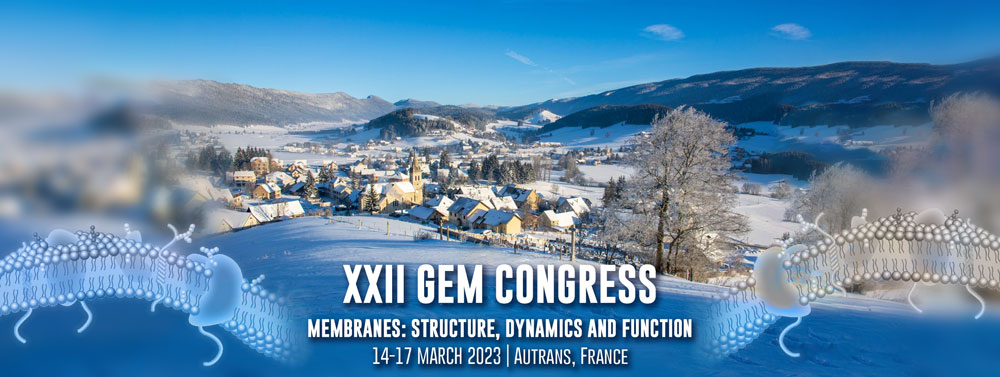Speaker
Description
Among the many assemblies that lipid molecules are able to form, lipid nanotubes (LNTs) are currently one of the most interesting structures in the framework of nanomaterials fundamentals and design. Their high-aspect ratio, tunable diameter size and biocompatibility, enables them for a plethora of biotechnological applications such as drug delivery, protein separation and DNA detection.1,2 Besides, many of the actual research in origin-life science is being focused on the fundamental role that LNTs have as transition structures for the formation of the firsts cell-like constructs that existed on the early Earth.3 Herein we focus on the physical characterization of LNTs formed by a synthetic alkyl-ether lipid called Ohmline.
Ohmline, developed as an anti-metastatic drug in cancer, bases its therapeutic action on changes induced in the mechanical properties of the plasma membrane that prevent the oncoprotein association in several cancer types.4,5
In this work we have assessed the role of external factors, namely solid surface energy, buffer ionic strength and pH on the formation and stability of solid-supported LNTs. For this, we have used quartz crystal microbalance with dissipation monitoring (QCM-D) as a microfluidic adsorption approach to form Ohmline films on SiO2 and Au surfaces, which also allowed us to acquire data on the main transition temperatures and changes of Ohmline lipid structures upon lipid adsorption. Topographical and nanomechanical characterization of the formed Ohmline films was assessed through atomic force microscopy force spectroscopy (AFM-FS) measurements. Interestingly, we were able to observe that under the presence of low ionic strengths, Ohmline is able to form very dynamic LNTs, whose stability is strongly temperature-dependent.
(1) Wang, Y.; Zhang, J.; Gao, H.; Sun, Y.; Wang, L. Lipid Nanotubes: Formation and Applications. Colloids Surfaces B Biointerfaces 2022, 212, 112362.
(2) Bi, H.; Chen, Z.; Guo, L.; Zhang, Y.; Zeng, X.; Xu, L. Fabrication , Modification and Application of Lipid Nanotubes. Chem. Phys. Lipids 2022, 248, 105242.
(3) Köksal, E. S.; Liese, S.; Kantarci, I.; Olsson, R.; Carlson, A.; Gözen, I. A Nanotube-Mediated Path to Protocell Formation. ACS Nano 2019, 13 (6), 6867–6878.
(4) Jaffrès, P.; Gajate, C.; Maria, A.; Couthon-gourvès, H.; Chantôme, A.; Potier-cartereau, M.; Besson, P.; Bougnoux, P.; Mollinedo, F.; Vandier, C. Pharmacology & Therapeutics Alkyl Ether Lipids , Ion Channels and Lipid Raft Reorganization in Cancer Therapy. Pharmacol. Ther. 2016, 165, 114–131.
(5) Herrera, F. E.; Sevrain, C. M.; Ja, P.; Dufourc, E. J.; Potier-cartereau, M.; Vandier, C.; Bouchet, A. M. Singular Interaction between an Antimetastatic Agent and the Lipid Bilayer : The Ohmline Case. ACS Omega 2017, 2, 6361–6370.
| Session | Nanomedecine |
|---|

